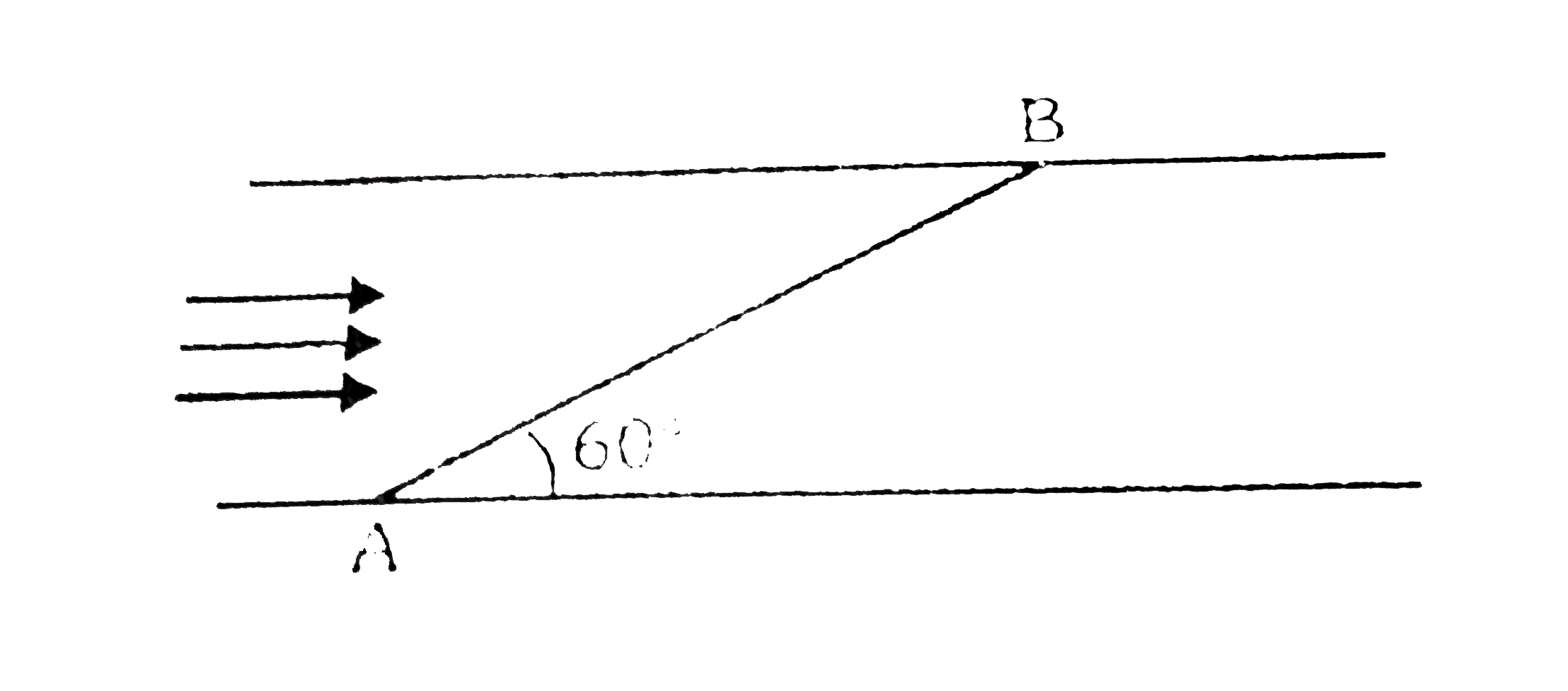A river wide flows at a rate at a rate of . A swimmer who can swim at . In still water, wishes to cross the river straight. (i) Along what direction must he strike? (ii) What should be his resultant velocity. (iii) What is the time of crossing the river?
(i) Refer to fig. 2(c ) 22,
velocity of river
Velcity of swinmmer in still water
The swimmer will cross the river straitght if the resultant velocity is perpendiculat to the bank fof the river, i.e., along . This will be possible if the swimmer groes upatream of the river along , making an angle with . In right , sin
:. (ii) Resultant velocity of the swimmer
t=(width of river)/v =(500 m)/(1.92 ms^(-1)) =260.4 s.
 .
.
Topper's Solved these Questions
- BOOK - PRADEEPCHAPTER - KINEMATICSEXERCISE - 1 SolvedExamples17videos
KINEMATICS
- BOOK - PRADEEPCHAPTER - KINEMATICSEXERCISE - 2 SolvedExamples31videos
KINEMATICS
- BOOK - PRADEEPCHAPTER - GRAVIATIONEXERCISE - Assertion-Reason Type Questions19videos
GRAVIATION
- BOOK - PRADEEPCHAPTER - LAWS OF MOTIONEXERCISE - Assertion- Reason Type Questions17videos
LAWS OF MOTION
Similar Questions
A river 800 m wide flows at the rate of 5kmh−1. A swimmer who can swim at 10kmh−1 in still water, wishes to cross the river straight. (i) Along what direction must be strike ? (ii) What should be his resultant velocity ? (iii) How much time he would take ?
View SolutionA river 600m wide wide flows at the rate of 8 km h^(-1). Still water, wishes to cross the river straight (i) Along what direction must be strike ? What will be his resultant velcity ? (ii) How much time he will take to cross the river ?
View SolutionA river 800m wide flows at the rate of 6kmh_1 in still water, wishes to cross the tiver straight. ltbRgt (a) Along what direction must he strike ?
(b) What should be his resultant velocity ?
(c ) How much time he would take ?View SolutionA man can swim at the rate of 5kmh−1 in still water. A 1−km wide river flows at the rate of 3kmh−1 The man wishes to swim across the river directly opposite to the starting point.
(a) Along what direction must the man swim ?
(b) What should be his resultant velocity ?
( c) How much time will he take to cross the river ?View SolutionA man can swim at the rate of 5kmh−1 in still water A. One km wide river flows at the rate of 3kmh−1 . The man wishes to swim across the river directly opposite to the starting point. How much time will be take to cross the river
View SolutionA man can swim at the rate of 5kmh−1 in still water. A 1−km wide river flows at the rate of 3kmh−1 The man wishes to swim across the river directly opposite to the starting point.
(a) Along what direction must the man swim ?
(b) What should be his resultant velocity ?
( c) How much time will he take to cross the river ?View Solution2 km wide river flowing with a rate of 5 km/hr. A man can swim in the still water with10 km/hr. He wants to cross the river along shortest path find
Crossing timeView SolutionA river is 12km wide and flows at the rate of 3 kmph. A man, who can swim in still water at the rate of 5 kmph wishes to reach the other bank of the river. In what direction should he start swimmin to cross the river (a) along the shortest route, (b) in the shortest possible time ? Calculate how much time he will take to cross the river in the two cases.
View SolutionA rever 500m wide flows at a rate at a rate of 4kmh−1. A swinmmer who can swin at 8kmh−1. In still water, wishes to cross the river straight . (i) Along what direection must he strike? (ii) What should be his resultant velocity. (ii) What is the time of crossing the river?
View SolutionA swimmer starts to swim from point a to cross a river. He wants to reach point B on the opposite side of the river. The line AB makes an angle 60∘ with the river flow as hown. The velocity of the swimmer in still water is same as that of the water

(i) In what direction should he try to direct his velocity ? Calculate angle between his velocity anf river velocity.
(ii) Find the ratio of the time taken to cross the river in this situation to the minimum time in which he can cross this river.View Solution

